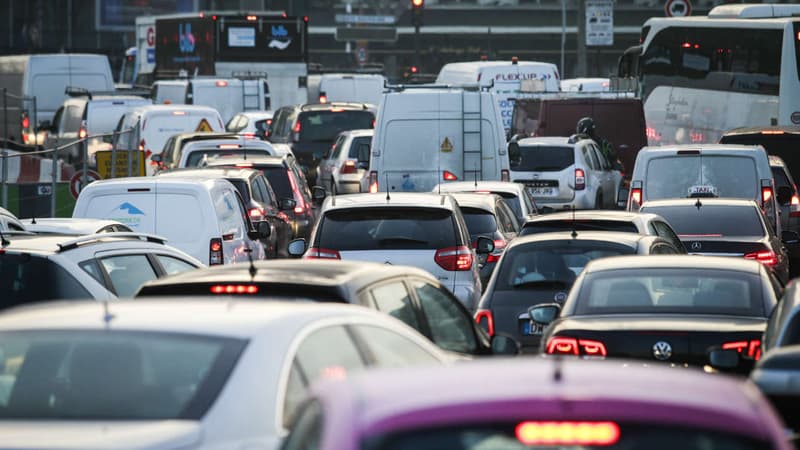An increase in traffic jams against a backdrop of rising fuel prices, the bill was high last year for motorists driving in major urban areas around the world. This is the main conclusion of the latest TomTom Traffic Index published this Wednesday, February 15.
+14% in gasoline, +25% in diesel
“In 2022, the average cost of travel in France increased by 14% for a gasoline vehicle and 25% for a diesel car compared to 2021,” says the press release issued by the specialist in GPS and mapping solutions. .
An average that includes the statistics of the 25 French cities of this study carried out worldwide, with 389 agglomerations from 56 countries for this 2022 edition.
Paris logically retains its title as the most congested city in France and the 11th in the world. In total, motorists circulating in this urban area lost 109 hours in traffic jams last year. An estimate of the shortest time needed to complete a typical 10-kilometer one-way trip from home to work, during peak hours.
To travel 10,000 kilometers in Paris last year, a user of a gasoline vehicle had to have an average fuel budget of 1,602 euros, 16% more than in 2021. The budget is lower for a Diesel model, 1,479 euros, but this bill goes up 28% in one year.
There are even higher increases in other major cities around the world, where this cost per 10,000 kilometers is higher than in Paris. This is particularly the case in Oslo (1,652 euros in gasoline, +33%), Athens (1,662 euros, +25%), London (1,792 euros, +28%) and Hong Kong (1,986 euros, +14%). ).
A budget cut in half with an electric
Logically, the electric car allows trips at a limited cost. We’re already seeing a gain even with a scenario where the vehicle only receives fast charging, the most expensive, which really doesn’t make sense for daily commutes where it’s better to recharge at home or at work. The economy is much higher in slow charging.
In Paris, for example, we would save almost 800 euros driving electric compared to a gasoline model, that is, a cost of 10,000 kilometers almost halved.
The disappointed hope of teleworking
After years 2020 and 2021 that were much more marked by the covid pandemic than in 2022, it is to be expected that new habits such as teleworking will make it possible to live in much less congested metropolises. This is not really the case, laments TomTom in its press release:
“With the global spread of more flexible work arrangements, many people now have the option of working remotely, adopting a hybrid routine or flexible hours. With fewer motorists during rush hour each day, traffic could logically have become more fluid. and somewhat limited the increase in the cost of travel, however this is not the case as travel times in metropolises around the world have increased by 1% overall in 2022.
However, without necessarily switching to electric power immediately, the gain associated with greater worker flexibility would not be negligible.
“By teleworking one day a week, a Parisian motorist would save 166 euros a year,” the study underlines.
And this additional purchasing power would also translate into a reduction in CO2 emissions. On a daily commute of 20 kilometers, “a Londoner using a standard petrol car to work every day emits 1.1 tonnes of CO2 per year. Teleworking one day a week, he would emit 227 kg less CO2 ”.
Source: BFM TV


